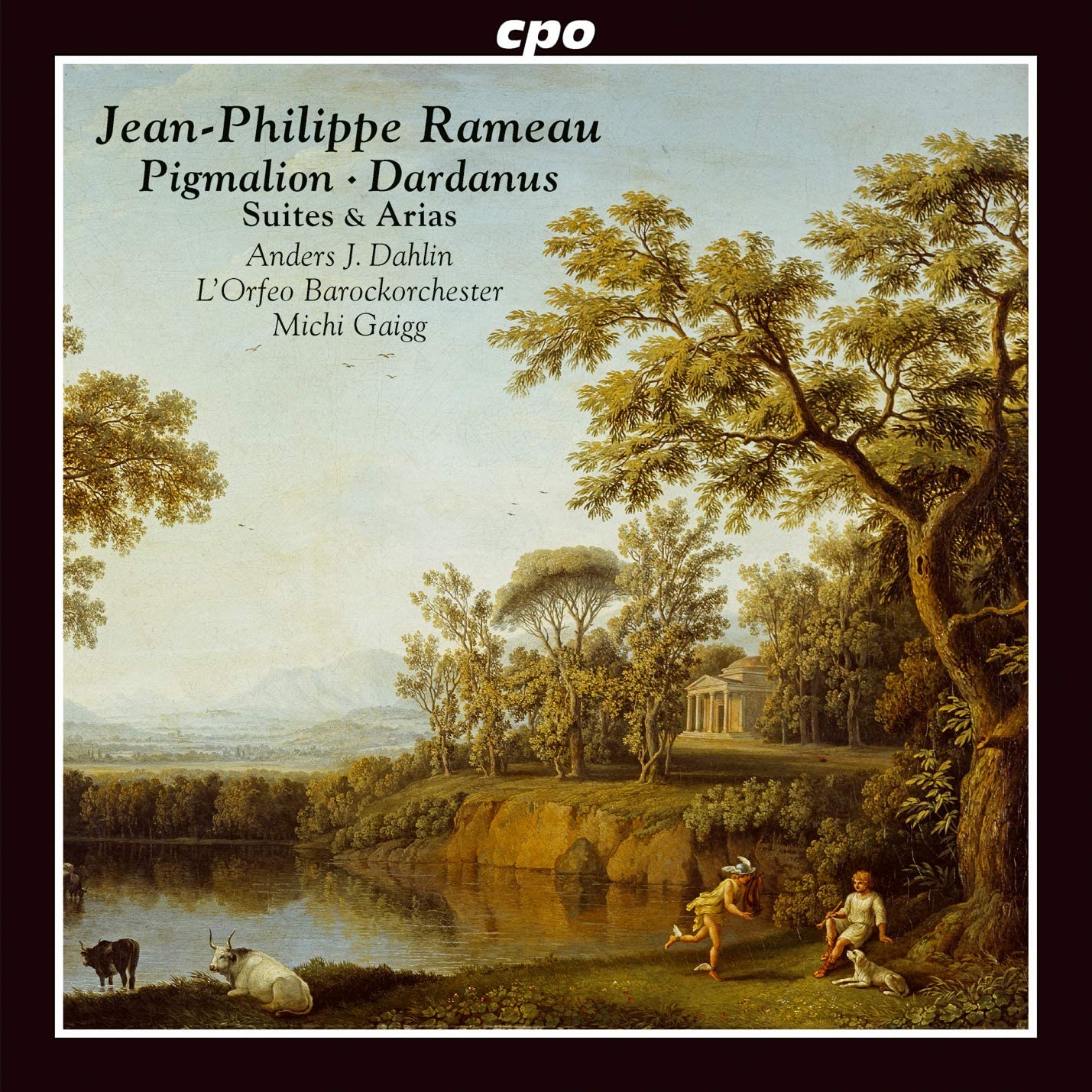Suites & Arias
Anders J. Dahlin Haute-Contre, L’Orfeo Barockorchester, Michi Gaigg
65:51
cpo 555 156-2
Click HERE to buy this on amazon.co.uk
This is a recording of conveniently sliced portions of Rameau to showcase the voice of the Swedish tenor, Anders J. Dahlin, and who wouldn’t wish to spend an hour lost in some fine French Baroquery when delivered so reverently and sensuously, done to a T… bien cuit!
Pigmalion – being that famous story of the sculptor falling for his statue with the help of Cupid (L’Amour) – was Rameau’s first outing with the “Acte de Ballet” in 1748. He must have enjoyed some success, for he wrote another seven between 1748-1754. In this version, the other characters, (including the Statue!) and the choral interjections have been removed to allow the eponymous hero to take centre stage. There’s much to admire with this slightly truncated version; the French musical idioms are very well-observed and delivered with the keenest charm and cogent skills. Both the dynamic orchestral shading and their lilting supportive tones are a delight to hear, and Dahlin himself dramatically creates the aspects of infatuation and afflicted pygmalionism. Even curtailed, it is a fine soupçon of the emotive dramaturgical effects Rameau could conjure from his vivacious, sparkling musical esprit.
Track 3, which is effectively the Graces teaching the statue to dance, echoes some of Rebel’s Caracteres de la danse; the whole piece closes with a sprightly Contradanse (Ballet general….au son du tambourin?). After modest initial success, Pigmalion was repeated in 1750s onwards and revived in 1781! It testifies to Rameau’s fecundity of ideas during a prolific period of activity.
Dardanus was staged three times, in 1739, 1744 and 1760. Drastic revisions were made, with the result that there are really two different operas. The extensive Ouverture et suite de danses (Track 20) from Dardanus featured on an Amati recording by the same ensemble in 1993; it is always fascinating to compare and while the Amati perhaps languished in those special “moments to savour”, strikingly, the closing Chaconne has a longer unfurling at 4:30 compared to only 4:07 here.
It is mighty difficult to cherry-pick from such works of transformative, scenic musical genius, especially when the range of options is so broad; this said, a happy “cross-section” has been made and played with verve and vigour. Dahlin displays pieces from salient moments in this Tragedie en Musique, yet perhaps something might have been included from one of the earlier acts too? This is, overall, an admirable display of some of Rameau’s moments of drama; touching key notes and reaching for those elegant, cheery moments of guaranteed infatuation.
David Bellinger
